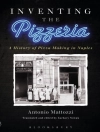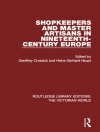This book looks at how that oft-maligned institution, the Anglican Church, coped with mass migration from Britain in the first half of the nineteenth century. The book details the great array of institutions, voluntary societies and inter-colonial networks that furnished the Church with the men and money that enabled it to sustain a common institutional structure and a common set of beliefs across a rapidly-expanding ‘British world’. It also sheds light on how this institutional context contributed to the formation of colonial Churches with distinctive features and identities. One of the book’s key aims is to show how the colonial Church should be of interest to more than just scholars and students of religious and Church history. The colonial Church was an institution that played a vital role in the formation of political publics and ethnic communities in a settler empire that was being remoulded by the advent of mass migration, democracy and the separation of Church and State.
表中的内容
Introduction: the Church of England, migration and the British world
1. The recruitment of colonial clergy, c.1790–1850
2. The making of the colonial laity
3. The Colonial Bishoprics’ Fund and the contest of colonial Church reform
4. British support for overseas expansion
5. Imperial ecclesiastical networks
6. The Church, associations and ethnic and loyalist identities
Conclusion
Bibliography
Index
关于作者
John Mac Kenzie is Emeritus Professor of Imperial History, Lancaster University and holds Honorary Professorships at Aberdeen, St Andrews and Stirling, as well as an Honorary Fellowship at Edinburgh.












